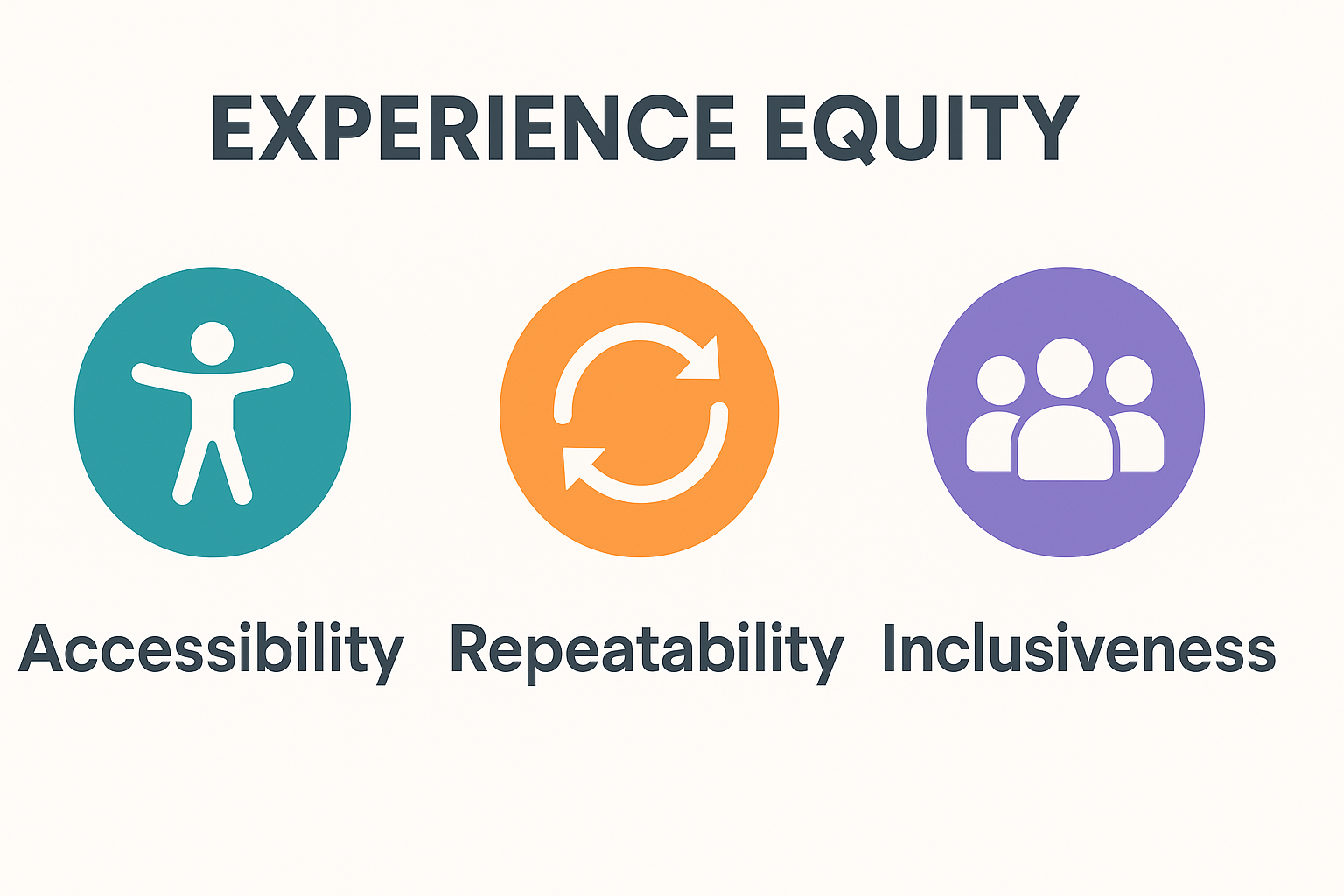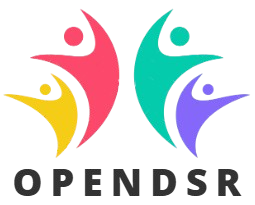
Design Standards in Action: Creating Inclusive Workplaces
Designing workplaces that are truly inclusive requires more than policy statements or occasional diversity campaigns. It requires consistency. It requires clarity. It requires standards that transform lofty intentions into daily practices employees can see, feel, and trust. Within the OPENDSR framework, Design Standards represent the third pillar—the mechanism that ensures experiences are not left to chance or variation. While empathy and real-time intelligence capture signals, and open platforms embed experiences into the flow of work, it is design standards that make them equitable, predictable, and accessible across the organization. Without standards, inclusion becomes optional. With them, it becomes operational.
Design standards in the context of employee experience (EX) are not about rigid uniformity. They are about building a baseline of dignity, clarity, and usability into every interaction employees have with their organization. From onboarding to promotions, from feedback conversations to exits, standards ensure that no matter who you are or where you work, you receive a consistent and fair experience. In practice, they are the antidote to the silent inequities that creep into workplaces when each manager, department, or region does things differently.
Consider onboarding as an example. Without design standards, one new hire might receive a warm, structured welcome with peer buddies, clear timelines, and accessible materials. Another, starting the same week but reporting to a different manager, may get a rushed walkthrough and a folder of outdated PDFs. Both work for the same company, but their experience of belonging is drastically different. Such inconsistency does not just hurt efficiency—it communicates inequity.
Design standards ensure onboarding is consistent: clear checklists, inclusive templates, accessible learning modules, and prompts for managers to cover essential cultural and relational touchpoints. They transform what could be a lottery into a level playing field.
The key to implementing design standards is understanding that design is not decoration—it is direction. How information is structured, how processes are communicated, and how rituals are standardized tell employees who is included and who is forgotten. Inaccessible documents, jargon-heavy announcements, inconsistent performance reviews, or biased recognition practices all carry silent signals about who truly belongs. Intentional design flips that signal.
The OPENDSR framework outlines three principles of experience equity that anchor design standards: accessibility, repeatability, and inclusiveness. Accessibility asks whether the experience can be consumed by all employees regardless of language, cognitive style, or digital access. Repeatability ensures that no matter the location or manager, employees receive the same clarity and baseline of fairness. Inclusiveness demands that those most affected by the design have a voice in shaping it, preventing blind spots caused by privilege or positional power.
A real-world case demonstrates the transformative power of standards. A fast-scaling company introduced a new hybrid onboarding program. While most managers embraced it, feedback from neurodiverse employees revealed that the pace and intensity of day one overwhelmed them. Instead of dismissing this as isolated feedback, the organization applied OPENDSR’s design blueprint. They broke content into micro-lessons, added asynchronous options, introduced sensory-friendly interface toggles, and paired each new hire with a peer guide. Within one month, day-30 confidence scores rose by 41 percent, and retention at 90 days improved by 22 percent. The content of the onboarding program did not change—the design did.
Such outcomes illustrate that inclusivity is not just about what is delivered but how it is designed. The Inclusive Experience Checklist, another OPENDSR tool, operationalizes this. Before launching a new initiative, teams ask: Is the content written in plain, jargon-free language? Are visuals representative of the workforce? Is it mobile-friendly and accessible via screen readers? Are synchronous and asynchronous options provided? Was the design shaped with input from employees with lived experience? These checks prevent costly oversights and demonstrate to employees that inclusion is embedded, not performative.
Consistency, however, is often misunderstood as rigidity. Some leaders worry that standards will limit personalization or manager autonomy. In reality, standards make personalization possible. By creating a consistent baseline, organizations free managers to add personal touches without risking inequity. For instance, if all managers follow the same 1:1 conversation template, employees know they will be asked about workload, well-being, and growth. That baseline ensures equity. A manager can then personalize the conversation based on team culture or individual style. Standards provide scaffolding, not shackles.
Performance reviews are another critical area where design standards prevent inequity. Without standards, one employee may receive detailed feedback, another only a quick score, and another a vague “keep it up.” This variability is not just frustrating—it directly impacts promotions, pay, and retention. By implementing standardized review templates with clear categories, inclusive prompts, and transparent criteria, organizations ensure every employee has a fair chance to understand and grow. This also reduces bias by shifting evaluation from subjective impressions to structured reflection.
Exit experiences further illustrate the need for design standards. Too often, departures are rushed, inconsistent, or avoided altogether. In one retail chain, exit conversations were happening informally, inconsistently, or not at all. Using OPENDSR’s design standards, they introduced a templated “Exit Reflection Card” with prompts around legacy, gratitude, learning, and suggestions. Delivered through Slack and HRIS, this card made exit conversations predictable and safe. Participation rose from 24 percent to 78 percent in 90 days, surfacing valuable insights that were previously invisible.
Design standards scale equity across geographies as well. Multinational organizations often struggle with cultural variations in process delivery. One region may receive detailed documentation, another a brief manager update. Standards ensure that while local adaptation is possible, baseline consistency remains intact. For example, a global engineering company used OPENDSR’s Design Equity Heatmap to audit their processes. They discovered that while U.S. teams received extensive promotion guidelines, employees in Asia received minimal communication. By redesigning for consistency, they created clarity across regions, reducing attrition tied to perceived favoritism.
Of course, implementing design standards is not without challenges. Organizations must avoid four common pitfalls: standardizing without empathy, assuming design is branding rather than experience, leaving design decisions to the last minute, and treating templates as the solution instead of the starting point. The goal is not to enforce compliance but to embed care. Templates are useful only when they invite reflection and adaptation for inclusivity.
Practical reflection questions help leaders apply standards thoughtfully. Which experiences feel different depending on manager or location? Where do new hires encounter confusion? How many versions of a single process exist across the company? What inequities result from this inconsistency? By confronting these questions, leaders can prioritize where design standards matter most.
Systematization is where standards become durable. Embedding design prompts into platforms ensures consistency without constant monitoring. For example, integrating inclusive checklists into project management tools or adding reflection prompts to calendar invites systematizes care. Employees no longer rely on individual champions to remember equity—it becomes automatic.
Design standards also shape culture by signaling intentionality. Employees notice when materials are accessible, when processes are consistent, and when rituals are inclusive. These signals accumulate into trust. Conversely, when design is sloppy or inconsistent, employees read it as disregard. They may not articulate it, but they feel it. Trust erodes silently when design is neglected.
Critically, standards must evolve. Refinement is key. A template that worked last year may exclude new realities today. For example, hybrid work has introduced accessibility challenges that were invisible in office-only environments. Organizations must regularly review their design standards against changing workforce dynamics, technology, and demographics. Standards should be living documents, iterated based on feedback.
Embedding design equity requires shared ownership. It cannot rest solely with HR or communications teams. Managers, team leads, designers, and technologists must all apply standards in their domains. Cross-functional “moment designers” play a crucial role here—embedding inclusive practices into daily rituals like team huddles, recognition programs, and performance cycles.
The benefits of design standards extend beyond employee trust. They also improve efficiency and reduce risk. When processes are standardized, employees spend less time decoding systems and more time contributing meaningfully. Legal and compliance risks diminish because experiences are consistent and fair. Talent mobility improves because employees trust the system to be transparent and equitable. In this way, design standards deliver both human and business outcomes.
A future-facing example illustrates this point. An IT company embedded design standards into their internal learning platform. Instead of ad hoc modules, every course followed a consistent template: plain-language summaries, accessibility toggles, feedback prompts, and inclusive imagery. Adoption rates soared, completion rates improved, and satisfaction scores doubled. Employees reported not just that the platform was easier to use but that they felt represented in the content. The design itself communicated inclusion.
The psychological science behind design standards reinforces their importance. Humans crave predictability and fairness. Inconsistent design triggers uncertainty, which increases cognitive load and stress. Standardized, inclusive design reduces that load, freeing employees to focus on meaningful work. Research on fairness also shows that perceived equity is as important as actual outcomes in driving engagement. Standards ensure both.
Ultimately, design standards are about respect. They communicate that employees’ time, energy, and dignity matter. They ensure that no one is left behind because of inconsistent processes, inaccessible tools, or overlooked details. They transform inclusion from a slogan into a system.
The OPENDSR framework positions Design Standards not as an afterthought but as a core pillar. Alongside empathy-led navigation and real-time intelligence, they make the framework actionable. Without standards, signals get lost and empathy becomes ad hoc. With them, organizations can consistently deliver experiences that reflect care and inclusion.
For leaders, the path forward is clear: audit your processes for inconsistency, apply inclusive design checklists, embed standards into workflows, and refine continuously. Start with the experiences that matter most—onboarding, performance, promotions, exits—and expand from there. Use standards not to constrain, but to create shared scaffolding that supports personalization and fairness.
In a world where employees decide daily whether to stay, engage, or leave, design standards are not optional. They are infrastructure. They are how organizations prove that belonging is intentional, not incidental. They are how workplaces move from statements about inclusion to systems of inclusion.
Design standards in action are not glamorous, but they are transformative. They are the invisible architecture of inclusive workplaces. And when applied through OPENDSR, they are the difference between a workplace that talks about equity and one that lives it every day.








